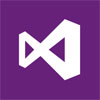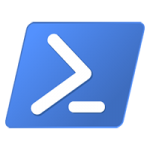Tag Archives: Microsoft
Android and iOS Apps in Windows 10
Microsoft has a vision to make Windows 10 the platform for developers, giving them the ability to cover phone, tablet, PC, hybrid and console. As there is a free upgrade for Windows 7 and 8 users to Windows 10, the company has an ambitious goal to reach 1 billion users on the Windows 10 family within 3 years of launch.
Microsoft announced their effort to bring developers and their apps to Windows in 4 steps.
Make it easy for web developers to present their sites as apps. It was already announced at Mobile World Congress earlier in the year. More specifications can be found here.
Allow developers to specially prepare existing Windows apps, whether Win32, .NET WinForms, .NET WPF, or any other Windows development technology and sell them through the Windows Store. The difference between the traditional installation and Store apps installation is that it will be installed, updated and uninstalled in a clean way to motivate users to try out new apps without the fear of too much of a hassle.
Give the opportunity to Android and iOS developers to take their iOS apps and build them for windows. Microsoft has developed an Objective C toolchain and middleware layer that provide the operating system APIs that iOS apps expect. (As an example King’s Candy Crush Saga for Windows Phone being one of the first apps built this way – only a few percent of the code had to be changed in order to fully port it in Windows phone.)
Allow Android apps to run in Windows Mobile, which is an official name for Windows on phones and sub-8 inch tablets. It will include an Android runtime layer that will let them run existing Android apps (both Java and C++) unmodified. Unlike Islandwood, which will require developers themselves to recompile their software to bring it to Windows, Astoria will in principle work with any old APK, without requiring the developer to do anything but publish the app in the store, as long as the APK sticks to the APIs that Astoria will provide.
There are two aspects to Android:
- Android Open Source Project (AOSP) – a mix of GPL and BSD-licensed open source code that anyone can take and fork
- Google Mobile Services (GMS) – an ever expanding closed-source set of applications and APIs that Google develops.
Microsoft did confirm that the supported proportion of AOSP and GSM would not be 100% in Astoria, however it will offer some integration points so that developers can with minor alterations support features like Cortana (personal digital assistant on PC and smartphone). The strategy is to allow developers to use the code they already have and encourage them to make Windows apps.
Microsoft launches Visual Studio Code
Visual Studio Code is a lightweight cross-platform code editor for writing web and cloud applications run under OS X, Linux and Windows. It is currently still in preview but it shows Microsoft’s commitment to support other platforms than Windows only.
Even though Windows is the most used development environment for .NET applications, Microsoft is trying to approach other environments as well instead of forcing the people to convert to Windows.
This new editor is partly based on Monaco editor for Visual Studio Online, with some features from Visual Studio language, including Roslyn project and .NET compiler platform.
Visual Studio code offers:
- Built-in support for multiple languages
- Rich code assistance
- Navigation for languages (JavaScript, TypeScript, Node.js, ASP.NET 5
- Set of additional tools
Standard tools of Visual Studio code:
- Modern code editor
- Syntax highlighting
- Customizable keyboard bindings
- Bracket matching
- Snippets
Visual Studio Code will be available in other editors as well, including Sublime Text, Vi and Atom.
Visual Studio Code is available on OS X, Windows and Linux (both 32bit and 64bit) and can be downloaded for free here.
Posted in Microsoft, Software Releases.
Tagged Microsoft, Visual Studio Code
How to uninstall Windows Phone SDK
Windows Phone SDK is included in Visual Studio 2013 now. If you are lucky enough you might have an entry for it in “Programs and Features” which will allow you to uninstall it. Sadly for me, this was not the case as there was no visible way to uninstall it from my system.
One solution that allowed me to uninstall Windows Phone SDK was to navigate to the packages folder that can be found in the Virtual Studio CD or .ISO file then look for the WindowsPhone81SDK folder, or something with a similar name in case the version is different.
Inside you will find some .msi files, simply right click on the files then select “Uninstall”. If Windows Phone SDK is installed on your computer the uninstallation process will begin.
Posted in Microsoft, Software Tips.
Tagged Microsoft, Windows Phone SDK
How to uninstall Microsoft Advertising SDK
Microsoft Advertising SDK is included in Visual Studio 2013 now. If you are lucky enough you might have an entry for it in “Programs and Features” which will allow you to uninstall it. Sadly for me, this was not the case as there was no visible way to uninstall it from my system.
One solution that allowed me to uninstall Microsoft Advertising SDK was to navigate to the packages folder that can be found in the Virtual Studio CD or .ISO file then look for the AdsSDK10 folder.
Inside you will find some .msi files, simply right click on the files then select “Uninstall”. If Microsoft Advertising SDK is installed on your computer the uninstallation process will begin.
Posted in Microsoft, Software Tips.
Tagged Microsoft, Microsoft Advertising SDK
Microsoft releases Visual Studio Community 2013
Microsoft has released a new version of Visual Studio 2013 that goes by the name of Visual Studio Community 2013.
What is this you may ask? Simply put, Visual Studio Community edition is a free, full-featured development environment designed for open source contributors, students, small companies, start-ups and individual developers.
Visual Studio Community 2013 offers the same of features that can be found in the professional version including the ability to install extensions.
Any individual developer can use the Visual Studio Community edition to create free or commercial apps. As for organizations, if you are a non-enterprise organization, up to 5 of your developers can use the Community edition. Otherwise, for enterprise organizations, you are prohibited from using this version except in cases where your project is an open source project or has to do with academic research and classroom learning.
Visual Studio Community 2013 comes with update 4 build in and can be downloaded at Visual Studio Community 2013 Offline Installer (.ISO / English)
If you are interested in more details or you wish to download a different language of the product, visit Visual Studio’s download page
Supported Operation Systems for Visual Studio Community 2013
- Windows 8.1 (x86 and x64)
- Windows 8 (x86 and x64)
- Windows 7 SP1 (x86 and x64)
- Windows Server 2012 R2 (x64)
- Windows Server 2012 (x64)
- Windows Server 2008 R2 SP1 (x64)
Recommended System Requirements
- 1.6 GHz or faster processor
- 1 GB of RAM (1.5 GB if running on a virtual machine)
- 20 GB of available hard disk space
- 5400 RPM hard disk drive
- DirectX 9-capable video card that runs at 1024 x 768 or higher display resolution
Posted in Microsoft, Software Releases.
Tagged Microsoft, Visual Studio, Visual Studio 2013, Visual Studio Community












